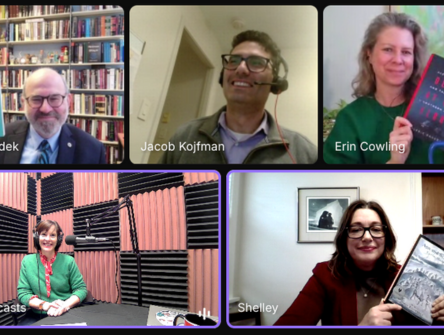Will the Supreme Court allow a tort of family violence to be created?
While the Ontario Superior Court created the new tort, the Ontario Court of Appeal disagreed, found the existing tort framework sufficient

The Supreme Court of Canada is set to hear an appeal about whether or not the Ontario Superior Court should have created an intentional tort of family violence.
The case of Kuldeep Kaur Ahluwalia v. Amrit Pal Singh Ahluwalia will come before the Court on February 11 and 12, with 17 intervenors lined up to speak to the matter.
At the Ontario Superior Court, Justice Mandhane took the new definition of family violence from the most revised version of the Divorce Act to create a tort of family violence. Later, Ontario Court of Appeal Justice Benotto wrote the unanimous decision that disagreed with the lower court, finding that the existing tort framework was sufficient.
Why, then, did the Supreme Court of Canada see this as an issue of national importance?
“If I had to make an educated guess, the Court understands that family violence is pervasive and something that impacts people—disproportionately women and girls—across the country. It’s an issue of national importance in and of itself,” says Pam Hrick, executive director of LEAF.
“I also suspect the Court sees this as an opportunity to clarify the framework for recognizing new torts overall. We’d welcome that guidance from the Court.”
As an intervenor, LEAF will argue that access to justice must be considered when courts decide whether to recognize a new tort. Hrick says they’ll speak to the importance of context in assessing whether a tort of family violence has been made out, if the Court chooses to recognize it.
LEAF will also highlight “the importance of providing practical guidance, to lower courts, to litigants, to lawyers, about how a tort of family violence can be applied.”
Hrick says there have been lower courts that looked skeptically upon allegations of family violence being made without expert evidence being advanced. Her organization hopes the Court can clarify that someone doesn’t need an expert to corroborate a survivor's experience or establish the tort.
“Judges are well-placed within appropriate guardrails and with appropriate guidance to assess credibility. That’s why context and assessing the credibility of witnesses is so important.”
'Courts should not be making law'
Not every practitioner feels a new tort is necessary. Gary Joseph, counsel and chair of MacDonald & Partners LLP in Toronto, has been practicing family law for 47 years. He believes the Court of Appeal got this right.
“My starting point in all of this is that courts should not be making law—Parliament should be making law. Parliament recently implemented some provisions in the Divorce Act, and then the Ontario government did the same thing to address intimate partner violence,” he says.
“Justice Benotto analyzed the issue, recognized that a tort was in place to deal with the problem, recognized the problem, didn’t minimize the problem, and said this is not needed.”
Joseph worries that there will be expanded pleadings dealing with alleged family violence and that it will extend the scope of litigation at a time when there has been an effort to minimize family law litigation.
But if you have a trial where family violence is an issue, the same evidence would need to be provided no matter what, says Mary-Jo Maur, a former family lawyer who now teaches law at Queen’s University. She notes that it’s unlikely to lengthen any trial, particularly if parenting issues are at play.
“If you’ve got all that evidence anyway, why not use it to support a tort claim?” she asks. “People have been adding tort claims to family law claims going back to the nineties.”
Maur, whose research focuses on how the family law procedural system can better serve all parties in a family law dispute, says failure to disclose, bad litigation behaviour, and unpreparedness tend to lengthen family law trials.
For his part, Joseph says intimate partner violence needs to be dealt with by criminal courts. Socially, there needs to be proper support in place, including public education programs to raise awareness of the problem and proper resources to help victims and deal with perpetrators.
“Do you really want family litigation to be doing a big part of that,” he says. “Do you want family litigation to be expanded?”
Hrick doesn’t necessarily believe that a family violence tort will make trials longer. However, she does think it will provide more clarity for resolving situations of family violence or understanding how legal liability works in those situations.
Right now, she says you have to combine a patchwork of torts that are available to assert any claim related to the injuries someone alleges they’ve suffered in a family situation. Having a tort that’s understood in the family context as the tort that governs, with clear indications of what factors need to be met and the approach to take, will create clearer conversations between lawyers and litigants.
Hrick adds that it would also clarify how to bring those claims forward in a legal framework and how to prove them, particularly for self-represented litigants, which increases access to justice.
Although he’s been disappointed with the quantum of damages involved with existing torts for aspects of family violence, Joseph says that can be addressed without creating a new tort.
“The damages awards have to be commensurate with the harm done. My experience with trials is that it hasn’t been in the past, but that doesn’t mean it can’t be on a go-forward basis.”
While some intervenors argue that a family violence tort could provide incentives for alleged perpetrators to settle instead of going through a trial, that prospect doesn’t appeal to Joseph.
“You’re going to have protracted negotiations on the quantum of damages? I’m not convinced,” he says.
“That’s weaponizing it, which is exactly what I think shouldn’t happen.”
Family law exceptionality
There’s also an argument to be made that this particular family violence tort is the wrong approach under tort law because it creates family law exceptionality, given that it can only be found in a family law context—unlike any other tort.
When other torts will do the job, the Court of Appeal said there’s no need to create a family law exceptional tort.
“Except for one thing,” says Maur. “This does not address the pernicious problem of coercive control.”
Coercive control is different from other kinds of violence, which can have one-off incidents. While it may not even involve violence, that’s often a feature of it.
“It includes stripping a woman of her autonomy,” says Maur.
“It may result in mental suffering, but the real harm of coercive control is taking away a person’s right to decide basic things like how they’re going to spend their money, with whom they’re going to socialize, what they’re going to wear, how often and what kind of sex they’re going to have. Coercive controlling behaviour takes all of that away from a person.”
She says that insisting there’s a tort that covers that ground is not correct. There is no other remedy for people who have had their autonomy taken away.
“They might get a remedy for their mental suffering or for their bruises and bangs from being battered. They might even get a remedy for being threatened, but no one will give them a remedy for their loss of autonomy. That’s the whole basis of tort law—compensating for intruding on someone’s autonomy, whether it’s bodily autonomy or your mind.”
A tort of coercive control?
While Justice Benotto at the Court of Appeal said intentional infliction of mental suffering should cover any loss of autonomy, Maur disagrees, insisting that losing autonomy is a much more serious problem.
She proposes creating a tort of coercive control, which would get around the issue of family law exceptionality. She says there’s a history of creating new intentional torts in Canada and Ontario specifically, pointing to the creation of the tort of intrusion upon seclusion in 2012. It was built upon the American restatement of torts that recognized four different privacy torts.
Hrick is less convinced that’s the way forward, as a tort of coercive control would be narrower in scope than the tort of family violence.
“A tort can be pursued in civil court or within a family court case as well,” she says.
“It doesn’t require a family court case to bring it forward, so someone who has experienced the harms captured by a tort of family violence, whether they are in an intimate relationship with somebody, or whether they are within a parent-child relationship, there is an ability to bring forward that tort.”
She adds that “the law, policy, evidence and practical considerations drive us toward the conclusion that the tort of family violence should be recognized.”
However, Maur suspects that the Supreme Court won’t be in favour of that because it doesn’t have a solid doctrinal footing, as well as its family law exceptionality.
“I think there is a good chance they will like a tort of coercive control,” she says.
“Some jurisdictions in the U.S. have added coercive control as a head of damage in family law claims already, so it’s not new to North America.”
Wherever the top court lands here, Hrick says the reality is torts are but one tool in a larger kit that is needed to address family violence effectively.
“While this is an incredibly important case, it’s also incredibly important to call for the resources to prevent family violence and to help survivors of family violence outside of the legal system as well.”


